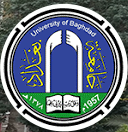Abstract
This study aims to highlight how the novel of Samarkand made use of history as being an aesthetic tool that provides knowledge burdened with a sense of wonder about the existence and the history of man, identity of the ego, its dialogue with the other, and the conflict of ideologies; particularly, this novel presents a historical textual interaction, presenting the vast facts through ancient times in the form of an imaginative reading and interpretation text component. Amin Maalouf, in this novel, travels from the present to the past in order to understand the present and to carry some of the issues of the day to comment on, and to answer what has remained vague for a period of time. The presence of history in the of the text, and considering it as an aesthetic reference, gives the creative texts a new structural construction, stemming from the appreciation of the historical material in its own right and the capacity to sense it. The evaluation of this sense is considered as a feature of humanity. The present research also aims to demonstrate how religious conflicts have emerged in Persia during the 11th century from various eminent personalities who played an important role in clarifying the religious field and the conditions that prevailed in this period.
Article Type
Article
First Page
171
Last Page
192
Publication Date
9-15-2020
Creative Commons License

This work is licensed under a Creative Commons Attribution 4.0 International License.
Recommended Citation
Abboud, Ourida
(2020)
"Historical Figures in Amin Maalouf's Samarkand,"
Alustath Journal for Human and Social Sciences: Vol. 59:
Iss.
3, Article 12.
DOI: 10.36473/ujhss.v59i3.1129
Available at:
https://alustath.researchcommons.org/journal/vol59/iss3/12










